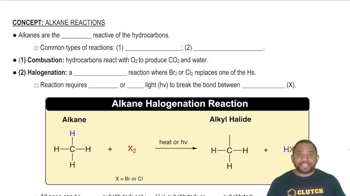Textbook Question
Balance the following equations:
(a) HClO4(aq) + P4O10(s) → HPO3(aq) + Cl2O7(l)
(b) Au2S3(s + H2(g) → Au(s) + H2S(g)
 Verified step by step guidance
Verified step by step guidance



Balance the following equations:
(a) HClO4(aq) + P4O10(s) → HPO3(aq) + Cl2O7(l)
(b) Au2S3(s + H2(g) → Au(s) + H2S(g)
Balance the following equations: (c) Ba3N2(s) + H2O(aq) → Ba(OH)2(aq) + NH3(g)
Balance the following equations: (d) Na2CO3(aq) + HCl(aq) → NaCl(aq) + H2O(l) + CO2(g)
Balance the following equations: (a) CF4(l) + Br2(g) → CBr4(l) + F2(g) (b) Cu(s) + HNO3(aq) → Cu(NO3)2(aq) + NO2(g) + H2O(l)
Balance the following equations: (c) MnO2(s) + HCl(aq) → MnCl2(s) + H2O(l) + Cl2(g)
Balance the following equations: (d) KOH(aq) + H3PO4(aq) → K3PO4(aq) + H2O(l)